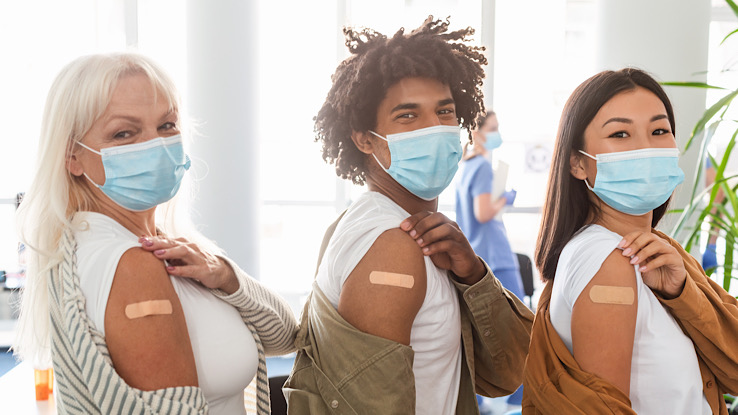
For years, there has been a massive disparity in various areas in terms of representation for many races and ethnicities. Little by little, various organizations and groups have been working to increase diversity in all walks of life. Thanks to companies like Genentech, clinical trials are more diverse than ever. About every 4 in 10 people in the US do not identify as White, and clinical trials are slowly reflecting that fact.
Thankfully, the Food & Drug Administration (FDA) has finally caught up and gotten on board that there needs to be a marked improvement in the enrollment of a more diverse population in clinical trials.
Many diseases that disproportionately affect underrepresented races and ethnicities haven’t been given the attention they deserve due to the health disparities. Hopefully, the new guidance rules will help improve diversity in clinical trials, but not everyone is so sure.
The FDA diversity guidance plan came at the same time as 90 other “Equity Action Plans” were set forth by several federal agencies. These include the EPA equity action plan and the Interior Departments equity action plan. Will these new guidelines be followed and make a difference, or will they get overlooked?
What Is the Goal of the New FDA Guidelines?
Simply put, the goal of the new FDA guidelines is to make sure that people of all races and ethnic groups are represented in clinical trials. Commissioner Robert M. Califf said, “Going forward, achieving greater diversity will be a key focus throughout the FDA to facilitate the development of better treatments and better ways to fight diseases that often disproportionately impact diverse communities.”
Here are some of the guidance’s primary goals.
Develop treatment that works for each people from different backgrounds
It’s no secret that people from different backgrounds (races, ethnicities, ages, and sex) react differently to treatments and medications. For example, something that works for a White or Caucasian person from the Midwest might cause an adverse reaction in a person that is Black from the Caribbean island of Jamaica. This is just one of the thousands of examples where people react differently based on their DNA and genetic makeup.
Increase access to clinical trials and treatments
One of the most significant focus areas is ensuring that everyone has the same access to clinical trials and treatment. Because our genetic makeup affects how we respond to chemo, radiation, and newer treatments, it’s essential to know how each ethnic group is affected. The goal is to cater to treatments and patient care plans specific to the individual and their needs.
Develop trust
Additionally, the FDA guidance aims to build trust between the science community and people who have endured a history of clinical trial misconduct and practices — such as the Tuskegee, Syphilis clinical study.
How Far Have Clinical Trials Come?
Historically speaking, clinical trials have been composed mainly of White men. As a result, most drugs and treatments developed over the past century are inadvertently catered to their needs. We’re not saying that all clinical trials were racist and wrong, just that many races and ethnic groups were highly underrepresented in the initial phases of the trials.
Even for conditions that affect ethnicities more than White people, such as respiratory conditions, there was an underrepresentation of diverse races and ethnicities.
For context, according to the 2020 census, there are 41.1 million Black or African American people living in the US. However, only 5 out of 100 participants in clinical trials in the United States consisted of Black patients. At the same time, 80 out of 100 were White, and only 40 out of 100 were females, with White males making up most participants of this ratio. The lack of participants from more diverse groups is multifaceted. It’s partially because not enough people are asked to participate, but it’s also because many aren’t willing to.
This lack of willingness stems from a lack of trust between underrepresented races and ethnicities, specifically the Black or African American community and the medical industry. Much of the mistrust dates back to the infamous Tuskegee experiments in which Black or African American men were deliberately denied treatment for syphilis. However, it goes much deeper than this. There are records of Black or African American people being mistreated in clinical studies as recently as the 1990s.
Another example of this concern exists with Mexican American people, who indicate that their lack of understanding of the details of the clinical trials influences their ability to participate. Much of the information is provided only in English and not translated into other languages.
The National Institutes of Health Revitalization Act
The underrepresentation of different races and ethnicities in clinical trials isn’t a new problem, either. Congress made efforts dating back to 1993 when they passed the National Institutes of Health Revitalization Act to make trials more inclusive for females and races. While the bill was a move in the right direction and resulted in the inclusion of more females, people from different races and ethnicities were still left behind. Another study emerged in 2014, which noted that less than 2% of participants in cancer-related clinical trials were Black. Less than 2%! This was due partly to racism on the part of the trials and because the 1993 bill only affected 6% of all clinical trials.
Current Representation of Diversity in Clinical Trials

Coronavirus-19 (COVID-19) was one of the most catastrophic and deadly diseases to hit the world in 200 years. However, one positive thing that came from it showed the need for increased racial representation in clinical trials. COVID-19 wasn’t prejudiced about who was infected, as it was deadly to people of all creeds and races.
Because of its widespread effect on anyone and everyone, clinical trials finally started to see the light on the need for ethnic representation. Genentech became one of the leaders in racial equality when it conducted a COVID19 pneumonia treatment trial, as well as Pfizer and Moderna vaccine trials. Their trials had a much higher representation of different racial and ethnic groups than ever before – including Black or African American, Native American, Hispanic, and others.
Will the New FDA Guidelines Make a Difference?
Only time will tell if the new guidelines will improve diversity in clinical trials. Companies like Genentech and academic institutions are doing what they can to increase diversity in clinical trials, but it will take a collective effort. Part of that joint effort is both education and outreach to understand and address some of the reasons underrepresented races and ethnicities are prevented from participating in clinical trials. Examples include providing educational materials in multiple languages, more public service announcements, videos, social media outreach, and ongoing culturally-sensitive partnerships.






